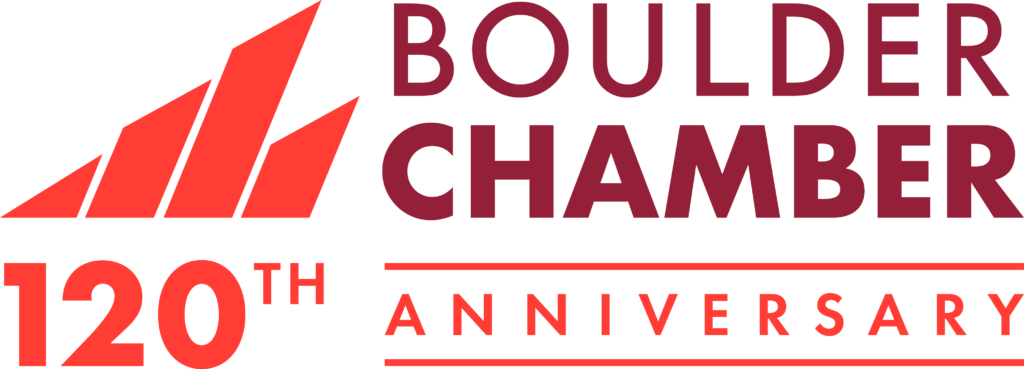Boulder Chamber Refreshes Strategy Framework
Organization seeks to meet evolving community challenges.

May 6, 2025
By Lucas High, BizWest. May 2, 2025.
The Boulder Chamber has updated Boulder Together, a program created in 2017 that sets forth its multiyear strategic initiatives, to better address the challenges and opportunities of the economic environment of 2025 and beyond.
The refreshed Boulder Together builds upon the original program’s pillars — workforce development, housing affordability and transportation mobility — contemplating additional issues such as commercial real estate vacancies, public safety and homelessness.
“This (update) is like Boulder Together on steroids,” Joseph Hovancak, executive director of the Boulder Chamber Economic Council and the Boulder Chamber’s vice president for economic vitality, told BizWest.
When developing the original Boulder Together program, along with the recent update, “we wanted to get surgical about where we’re putting our resources, our time and our investment, and then rallying around that,” Boulder Chamber CEO John Tayer said. “The theme of the Boulder Together program has always been bursiness leadership and community collaboration to focus on addressing the greatest challenges for Boulder’s businesses, economy and community.
“We recognize that there are certain issues that take a much more concentrated focus over a longer period of time that are critical to the long-term economic vitality of Boulder and address community interests,” he said. “Boulder Together is designed to give us the capacity to apply our attention to these activities.”
The aim of the update is to continue and expand the “significant success stories” that resulted in part from the 2017 program, Tayer said, pointing to progress made in smoothing the path for more affordable housing options for Boulder’s workforce as an example.
“We recognize that Boulder had a horrible reputation for being a community that’s too expensive to develop” the housing stock necessary to make a dent in the affordability crisis, he said.
As part of the Boulder Together effort, the chamber pushed to make the city’s approval process more streamlined for developers, while advocating for more flexibility in Boulder’s land-use code that could encourage construction of new homes.
Tayer cited the creation of the East Boulder Subcommunity Plan, which guides development in a portion of the city, and the annexation of CU South as tangible successes that came in part as a result of the Boulder Together initiative.
To develop the updated strategic framework, “we partnered with the City of Boulder to send out a survey of business needs and concerns to 6,000 businesses across our community, and ultimately secured responses from 1,000 of those businesses,” he said. “That helped us narrow and prioritize the issues of concern to our business leadership.” Then the chamber held a series of focus groups “with a diverse group of business leaders” to “dig deeper” into the survey results.
The result was the creation of seven pillars “focused on the most pressing needs” facing businesses, workers and the community at large, Hovancak said.
“You don’t have to be a member of the chamber or the Economic Council” to benefit from the Boulder Together initiatives, he said. “This is a collective-impact initiative, and it is designed for the whole community.”
Since the original Boulder Together initiative was launched roughly eight years ago, Boulder’s economic ecosystem has weathered the COVID-19 pandemic, and its leaders are bracing for new challenges related to issues such as tariffs, federal funding cuts and the potential for a broader economic slowdown.
“There are definitely big headwinds and a need for us to be concerned but cautiously optimistic,” Hovancak said. “… So those conversations are coming up, and Boulder Together is like the security blanket that’s out there” to help businesses and the community navigate a potentially challenging economic environment.
Here are the pillars of contained in the refreshed Boulder Together:
Boulder living: housing affordability with a focus on middle-income workers.
The goal is to “(e)xpand and diversify access to middle-income workforce housing through innovative policies and strategic partnerships,” including implementation of “housing-friendly reforms,” leveraging “collaborative financing” and “secur(ing) government housing development resources.”
Boulder secure: public safety and security with a focus on support for law enforcement.
“One of the points of pride of the Boulder community has always been its relative public safety,” Tayer said. “But in recent years, we’ve seen an uptick in a variety of different types of criminal activity, particularly crimes that impact businesses.” Increases in crime and disruptive behaviors, or the mere perception of such increases, “can have a negative impact on traffic to our restaurants, retailers and service providers.”
Support for law enforcement is coupled with the “need for effective solutions that harmonize with the values of our community,” he said, which means “thoughtful” approaches to crime reduction that rely on the “lowest necessary use of force.”
Strategies for achieving the “Boulder secure” goals include strengthening the city’s co-responder model, improving jail operations and expanding crisis and treatment options.
Boulder responds: developing comprehensive solutions to homelessness.
“Homelessness has been a growing concern in our community,” and while a wide swath of stakeholders have been working toward developing a suite of “comprehensive solutions, we’re not there yet,” Tayer said. “We need to focus on systems of addressing the needs of our unhoused population, as well as making it clear that we as business leaders cannot tolerate the abuse of our public spaces and the sense of insecurity that is created with homeless encampments and other behaviors that are negative both for the unhoused folks themselves and for the community as a whole.”
Strategies for achieving positive momentum on this issue include increasing permanent supportive housing options, bolstering behavioral health services and better enforcement of existing laws.
“While the business community isn’t the practitioners who implement the programs that address the needs of our unhoused population, we are the voice for solutions that are going to be the most effective and efficient,” Tayer said.
Boulder works: workforce development with a focus on bridging talent and opportunity.
“We have one of the greatest wealth of talent right here in the community, and that is the University of Colorado student body,” Tayer said. “… One of the things we’re going to be focusing on is making a tighter connection between those graduating students and the job opportunities in our community.”
One such effort is Boulder Hires Buffs, a recently launched partnership between the chamber and CU that connects students and soon-to-be graduates directly with local employers.
“Boulder is at the forefront of groundbreaking industries like AI and biotech, industries that are shaping our economic future,” Hovancak said when the program was launched in March. “For these sectors and our broader business community to thrive, they need a strong pipeline of skilled talent. This program is designed to bridge that gap, directly connecting businesses and nonprofits with the next generation of graduates ready to drive innovation and growth.”
Other chamber workforce-development efforts will be focused on emerging technologies such as quantum computing. Last year, the U.S. Department Of Commerce designated Colorado as a Tech Hub for quantum technology, and Tayer said he expects a rush of companies in that sector relocating to the Boulder area. Those companies, of course, will need workers, and Boulder Together aims to make sure that the local workforce is ready to step into those jobs.
“We need to evolve our workforce-development programs and training opportunities and apprenticeship programs to meet those needs,” he said.
Boulder moves: transportation with a focus on regional connectivity.
While it’s critical that Boulder improve its housing supply and affordability, not everyone who visits or works in the city can — or wants to — live within its limits, Tayer said. Therefore, it’s critical to make it easier to commute to and from Boulder.
“We need to provide convenient, affordable connections between where people live and the job opportunities in our community,” he said.
In practice, that could mean anything from supporting the development of corridors within the city where people can live, work and recreate; encouraging micro-mobility solutions such as e-bikes and scooters; and advocating for robust and sustainable public and multi-modal transportation options such as regional bus and train routes.
Boulder launches: startup and small-business support with a focus on vibrancy and diversity.
“When we’re talking about diversity in the startup arena, we’re talking about both the character and types of business enterprises, but also the individuals who are the leaders who are pursuing those entrepreneurial ventures,” Tayer said. “We recognize that many of our underrepresented entrepreneurs have challenges in accessing capital and identifying mentorship support. We want to make sure that we’re reaching into all communities across our business sectors to make sure that everybody has an opportunity to pursue their vision. We’re going to be making an extra effort to recruit and provide opportunities for a wide spectrum of business leaders.
Boulder Together includes strategies such as hosting curated monthly start-up access events and an annual founders summit.
Boulder thrives: commercial revitalization with a focus on marketing and conversions.
“One of the great challenges coming out of COVID has been the transition to remote work, which has led to large increases in office vacancies — upwards of 30% in the downtown Boulder area,” Tayer said. “That has an impact on the character of our business environment because one of the special features of the Boulder business community is the compact nature” of the city’s commercial districts. So when offices are empty, it isn’t just landlords missing out on rent checks, it’s restaurants and shops losing critical daytime traffic. “We want to build that back.”
Filling empty offices isn’t limited to simply bringing workers back to their cubicles. “We need to think about some other creative uses for some of those offices,” Tayer said. “That means everything from potentially transitioning some of them to residences, using some of them for things like creative and artistic spaces for the community.”
Boulder Together emphasizes the need to more effectively market the city’s commercial districts to a wider audience, which Tayer said “is something that we haven’t had to do” during previous economic cycles.
